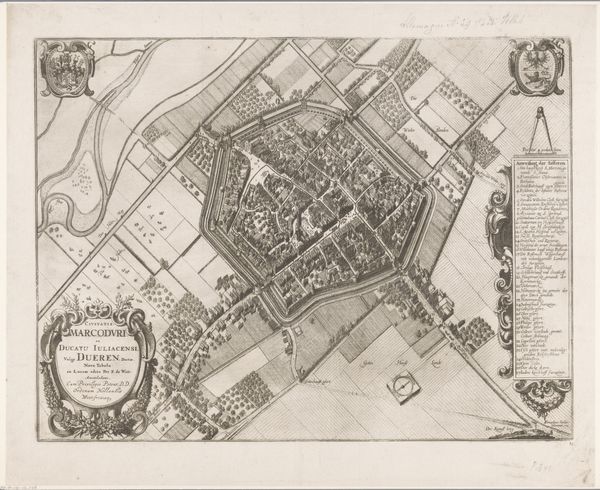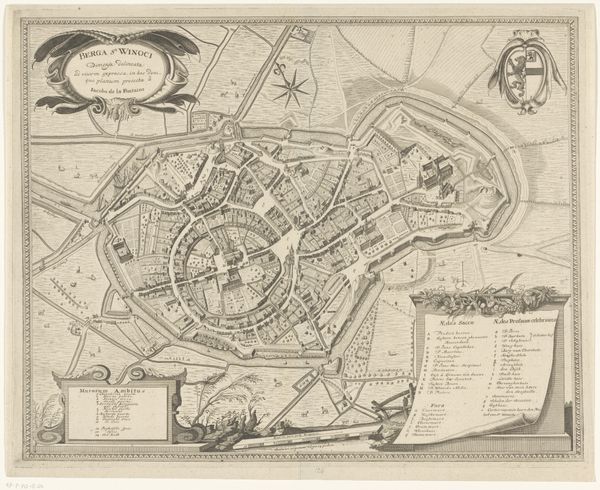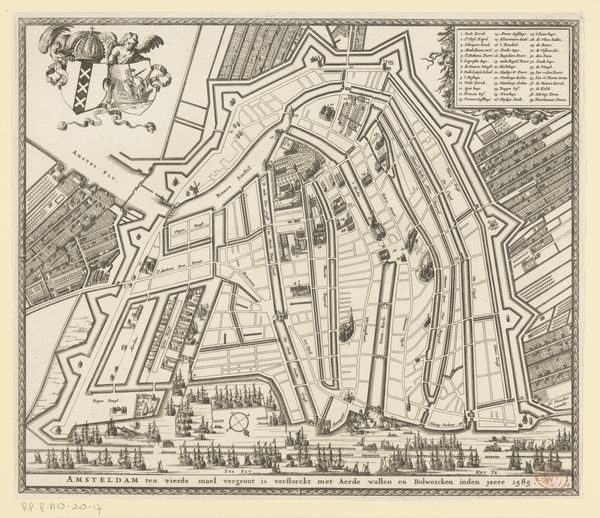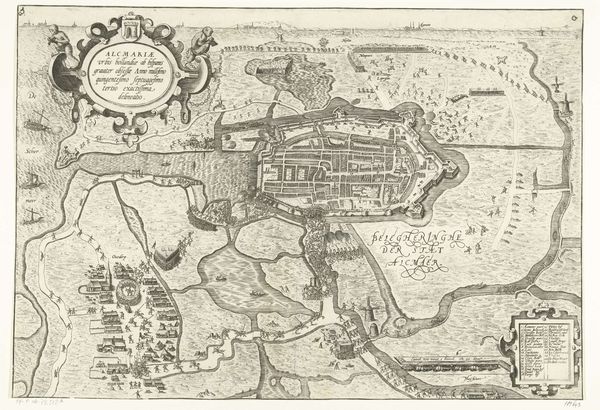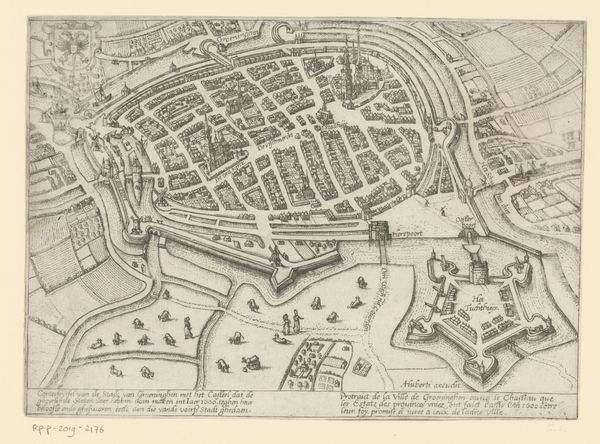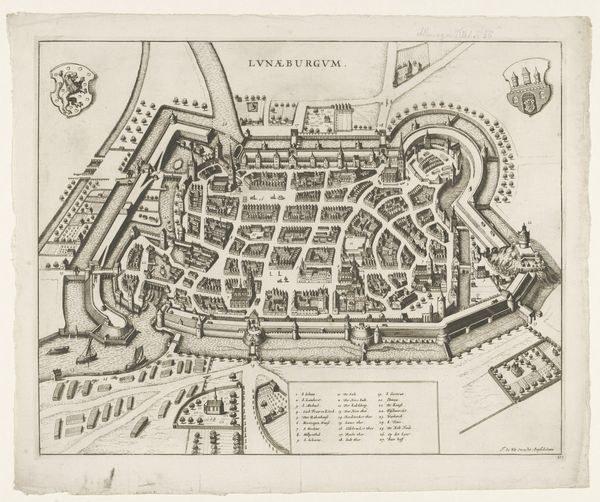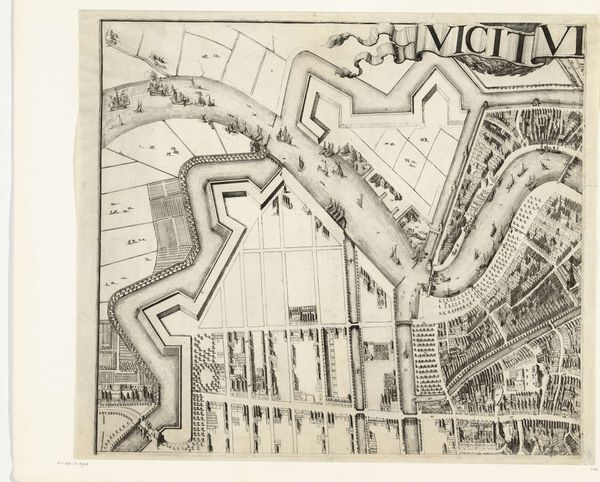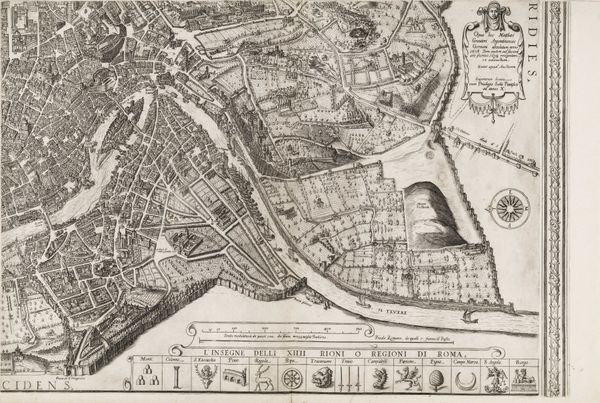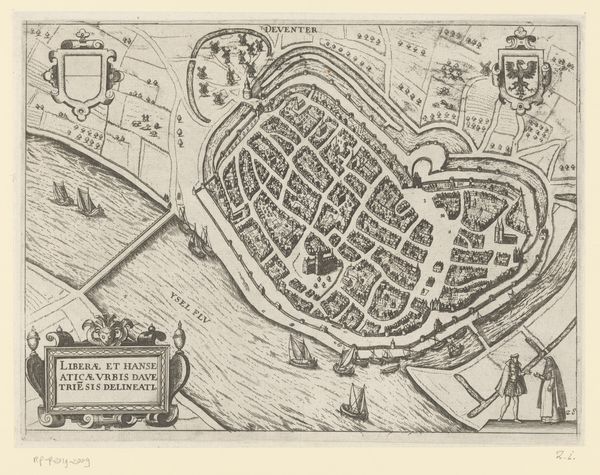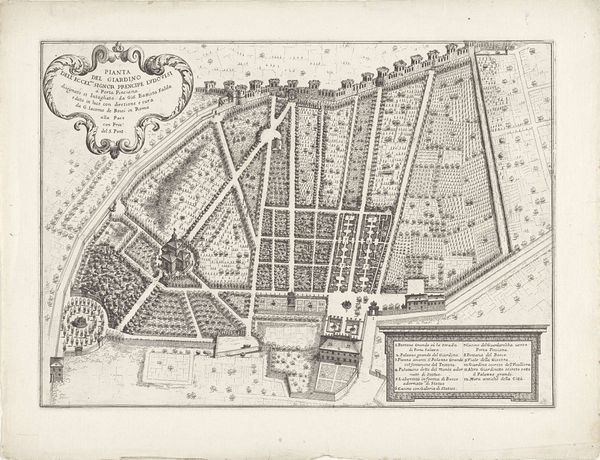
print, engraving
#
baroque
#
pen drawing
# print
#
landscape
#
cityscape
#
engraving
Dimensions: height 360 mm, width 476 mm
Copyright: Rijks Museum: Open Domain
Curator: This is Wenceslaus Hollar’s "Plattegrond van Oldenburg," dating from around 1729 to 1733, held here at the Rijksmuseum. It's a meticulously crafted print, combining engraving and pen drawing techniques to present a detailed city plan. Editor: My first thought? A beautiful, controlled chaos. All those lines, all that detail packed into one space. It's like a baroque ant farm! Gives you a dizzying sense of perspective, imagining yourself hovering above the city. Curator: It does capture a remarkable level of detail. These cityscapes served multiple purposes— artistic expression, but also civic documentation. The layout is designed to be informative, showcasing fortifications and the distribution of buildings. Note how strategic the river is for the city. Editor: Absolutely. Makes you wonder about the lives contained within those neat little structures. Is this a portrait of order, or just the *idea* of it? It all feels very organized, almost idealized, yet something in the density tells me it must've been messy and chaotic. You can't escape humanity, not even in a map. Curator: Precisely. The very act of mapping, the power to define space and property lines... it was deeply embedded in power structures. City maps like this were often commissioned by ruling elites to demonstrate control and to impress. You see that elaborate coat-of-arms there, which tells a powerful story. Editor: Ah, power. So elegant, so imposing, like wrapping something functional in exquisite gift wrap. I bet the inhabitants saw something different when they gazed on this. And isn’t it funny, this whole bird’s eye view… Like some deity is giving us permission to observe them from the sky! Curator: And of course, let's not overlook Hollar’s technical skill. The detail in the buildings, the subtle variations in line weight—all achieved through the meticulous processes of engraving and pen drawing, very intricate indeed. Editor: Totally! When I see something this precisely rendered I can't help but picture the artist hunched over for hours making this thing with great labor. It definitely makes me feel small in a big, timeless sort of way. Curator: Indeed, thinking about its history— who made it, why, how it circulated, and what political purpose it served is so central to interpreting its visual form and design. Editor: Looking at it all together like this— the order, the human details— creates this compelling story and reminds me art is the act of bringing those opposing forces into play. Thank you for expanding my view!
Comments
No comments
Be the first to comment and join the conversation on the ultimate creative platform.

